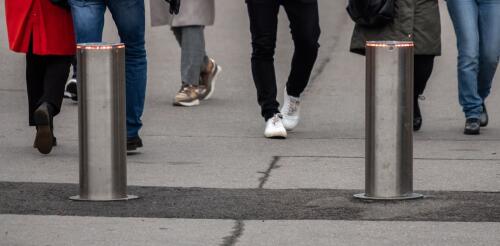Pedestrians
“Can you name the truck with four-wheel drive, smells like a steak, and seats 35?” Back in 1998, “The Simpsons” joked about the Canyonero, an SUV so big that they were obviously kidding. At that time, it was preposterous to think anyone would drive something that was “12 yards long, two lanes wide, 65 tons of American Pride.” In 2024, that joke isn’t far from reality. And our reality is one where more pedestrians and bicyclists are getting killed on U.S. streets than at any time in the past 45 years – over 1,000 bicyclists and 7,500 pedestrians in 2022 alone. Vehicle size is a big part of this problem. A recent paper by urban economist Justin Tyndall found that increasing the front-end height of a vehicle by roughly 4 inches (10 centimeters) increases the chance of a pedestrian fatality by 22%. The risk increases by 31% for female pedestrians or those over 65 years, and by 81% for children. It’s hard to argue with physics...
Deadly traffic incidents have declined in most developed countries in recent years. But in the U.S. they’re becoming more common. Deaths in motor vehicle crashes rose more than 33% from 2011 to 2021. Since 2010, pedestrian deaths nationwide have climbed a shocking 77%, compared with a 25% increase in all other types of traffic fatalities. Light trucks injure pedestrians more severely than passenger cars in crashes, and the size of cars and trucks sold in the U.S. continues to swell. Some current models, such as the Toyota Rav4, are one-third larger than they were 15 years ago. Based on my experience researching urban planning and street design for the past three decades, I know that U.S. cities are primarily vehicle-centered rather than human-centered. Rules established in the 1920s govern how people use vehicles in public streets, and other governmental controls tell manufacturers how big those vehicles can be. Today, these sets of rules have created public spaces w...

